A partial knee replacement, more formally known as a unicompartmental knee arthroplasty (UKA), is a surgical procedure that removes damaged tissue from one compartment of the knee joint. The goal of the surgery is to relieve pain and improve function in that particular compartment, while preserving bones and ligaments in other parts of the joint. Partial knee replacements are less invasive than total knee replacements, result in less blood loss, and have a quicker recovery time. They are also associated with better range of motion in the knee post-surgery. After recovery, knees with partial replacements feel more like normal knees than those with total knee replacements.
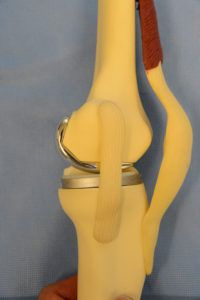


Did You Know?
The knee joint contains three compartments. The medial compartment is on the inside of the knee, the lateral compartment is on the outside of the knee, and the patellofemoral compartment is in the front of the knee between the femur and the patella (kneecap).
Frequently Asked Questions:
Am I a candidate for a partial knee replacement?
Partial knee replacements are an appropriate treatment for people who have arthritis or osteonecrosis in only one compartment of the knee who are no longer experiencing relief from non-surgical treatment options. Intact cruciate ligaments (ACL and PCL) and sparing of the patellofemoral joint are additional requirements. Partial knee replacement is not appropriate for patients with inflammatory arthritis or those with failed osteotomy procedures.
To determine if you are an ideal candidate for a partial knee replacement, schedule a consultation with Dearborn & Associates, the Bay Area leader in partial and total knee replacement surgery.
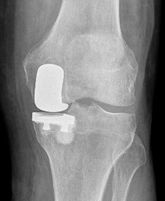
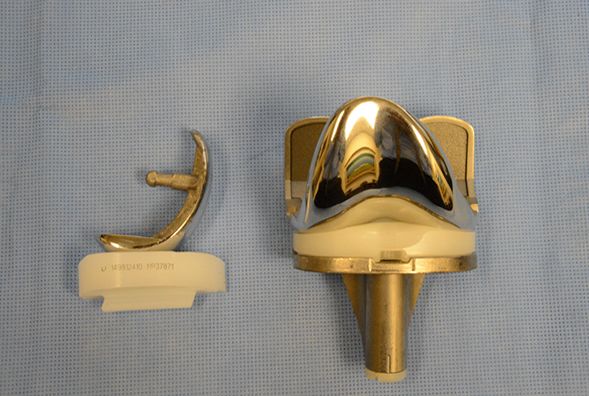
Partial Knee Replacement on x-ray
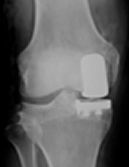
Total Knee Replacement on x-ray
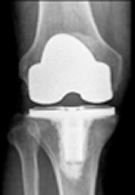
How are partial knee replacements performed?
At Dearborn & Associates, your partial knee replacement will be performed under spinal anesthesia with a specialized nerve block in the thigh. You may elect to have sedation as well. The procedure takes less than an hour. Our partial knee replacement procedures are performed using a minimally-invasive technique that limits trauma to the surrounding structures and promotes faster recovery times. There are three main steps to a partial knee replacement:
- Your surgeon will make an incision in the knee.
- The damaged cartilage and a small amount of bone from the medial compartment will be removed, using specialized guidance devices to ensure perfect alignment.
- A metal implant will be inserted into the top of the tibia and onto the end of the femur, using bone cement to hold them in place. A plastic bearing is inserted into the tibia piece.
What can I expect during recovery?
After your operation, you can expect to spend about an hour in the recovery room area, until the spinal anesthetic wears off. Within a few hours, one of our physical therapists will have you up and moving as they show you post-operative exercises and techniques for everyday tasks. You will be ready to go home 4-5 hours after surgery.
During your recovery process, a walker or cane will be needed initially. You may also desire a cooling unit to help with postoperative discomfort. You can expect to have a physical therapist come to your house to assist you with an exercise program to promote proper healing. Follow up visits are also usually scheduled at the 2-week, 6-week, and 3-month marks.
In most cases, you should be able to walk independently within 2 weeks after surgery. At the 6-week mark, you will be able to resume most of your regular activities.
Schedule a consultation with Dearborn & Associates in Menlo Park & Fremont, CA today to see if a partial knee replacement is the right treatment for you!





